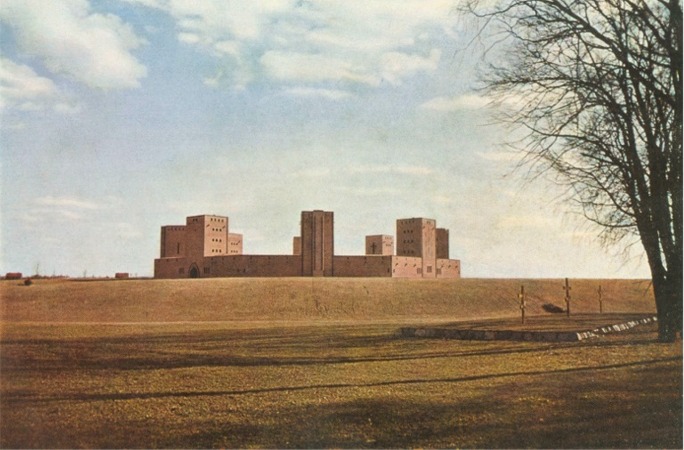
The truck came from Allenstein and continued towards Bartenstein. But also in Heilsberg an unknown "covered transporter" was seen by a Königsberger woman living there, on which - according to one officer - the Hindenburgs would leave East Prussia. It said: "Here are the coffins from Hindenburg and his wife on it, brought from Tannenberg." Olsztyn lies southeast of Mohrungen. "In any case, flags were not loaded in the Tannenberg monument."Īnother contemporary witness remembers seeing the truck column on the barracks in Allenstein, near the main gate / guard, in the evening on January 21. She no longer remembers whether it was the coffins or the bronze sarcophagi. A Hohensteiner from Mohrungen attended the transport, consisting of four to five trucks. January 1945 passed the Glommen stop.įrom the numerous letters to the publication "The traces of the coffins" in episode 8 of February 22nd, a surprising finding can already be gained: the removal of the Hindenburg coffins from the Tannenberg monument did not take place on the 20th, but only on the Tomorrow of January 21st. The "competing notes" make it seem conceivable that coffins and sarcophagi were brought separately to Königsberg and one of these transports by rail around the 21st and 22nd centuries. It can be shown that the railway line between Bartenstein and Königsberg - and thus via Glommen - was still intact until January 26th. He mentioned the coffin transport in a letter to his wife.Ī serious trace of the fact that the Hindenburg coffins were transported by rail, even if only partially, can not be seen from the letters available so far, but nevertheless a number of extremely interesting "contradictions", in research as "competing information" designated. The captain has been missing since the fighting in the Heiligenbeiler Kessel. It cannot be explained how he could have reached Hohenstein so quickly when the orders were tight. However, Estner was stationed in Königsberg. Estner, a civilian teacher in Hohenstein, wants to have the coffins - not sarcophagi - removed. Except for a small black notebook, his estate has not survived. Why the so careful researcher Gert Sailer did not publish an initially plausible version can no longer be checked today. The other pieces of equipment of the eight towers, which - according to Gert Sailer - had previously been removed by the monument head Fritz Stubenrauch, have also been lost. There was no trace of the bronze sarcophagi. Hindenburg and the 69 Tannenberg field signs. On the cruiser "Emden" in Königsberg, however, the two bronze sarcophagi from the Hindenburg crypt no longer arrived, but only the two oak coffins of the married couple. "He also looked around the Hindenburg crypt, the two sarcophagi were no longer there." All towers had been cleared out and empty. Shortly before the explosion, as there was complete silence, a Wehrmacht soldier was able to inspect the Tannenberg monument again in detail. Another note from Gert Sailer is even more important. It follows that the 229th Infantry Division was commissioned to blow up the memorial, but not to retrieve the coffins, and furthermore that the order to destroy was given only after the successful rescue from the Tannenberg memorial had been carried out. Unfortunately, Sailer does not say who took away coffins on January 20 and how.īut in his documentation, which was created with scientific meticulousness, further, essential information is contained, such as that the 229th Infantry Division only started its new command post - coming from the east - in Hohenstein in the Hotel "Kaiserhof" in Hohenstein on the night of January 20 set up where, on the morning of the 21st, the VII Panzer Corps received the leader’s command to destroy the Tannenberg monument by radio. Hindenburg was brought to Königsberg together with the replicas of the flags and standards involved in the battle in Königsberg. On January 20, the bones of the couple v. A little later, however, the coffins were ordered to be rescued, as was the destruction of the Tannenberg monument.

Hitler is said to have initially rejected the request. This emerges from a very carefully researched documentary by Gert Sailer, which appeared in the German Soldier Yearbook in 1988.Īccording to Gert Sailer, the initiative to salvage the Hindenburg coffins also came from the Königsberg fortress commander and military commander general of the infantry Otto Lasch, but especially from Lasch's chief of staff, colonel in the general staff Frhr. The existing explosives were only sufficient to destroy the Hindenburg tomb and the main and entrance towers. However, the explosion did not actually occur until the evening of January 21. On January 25, 1945, the 229th Infantry Division reported to the 7th Panzer Corps that all measures to destroy the Imperial Memorial had been initiated in the midday hours of January 21.


 0 kommentar(er)
0 kommentar(er)
